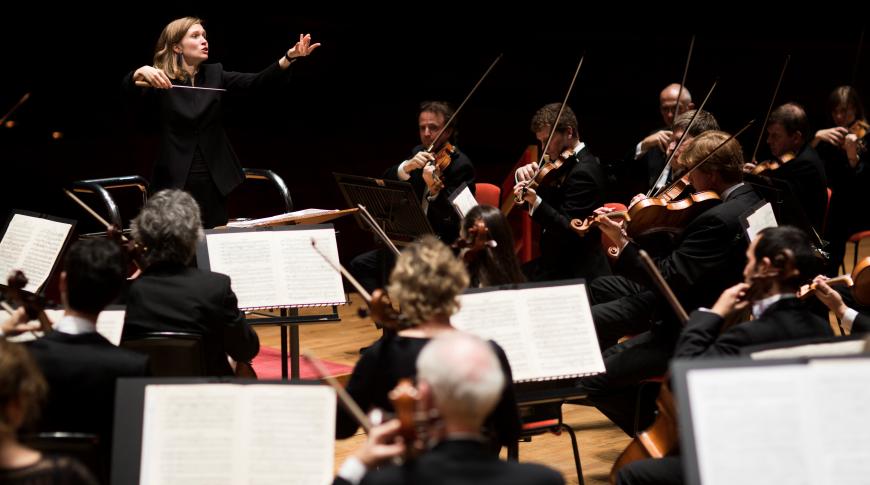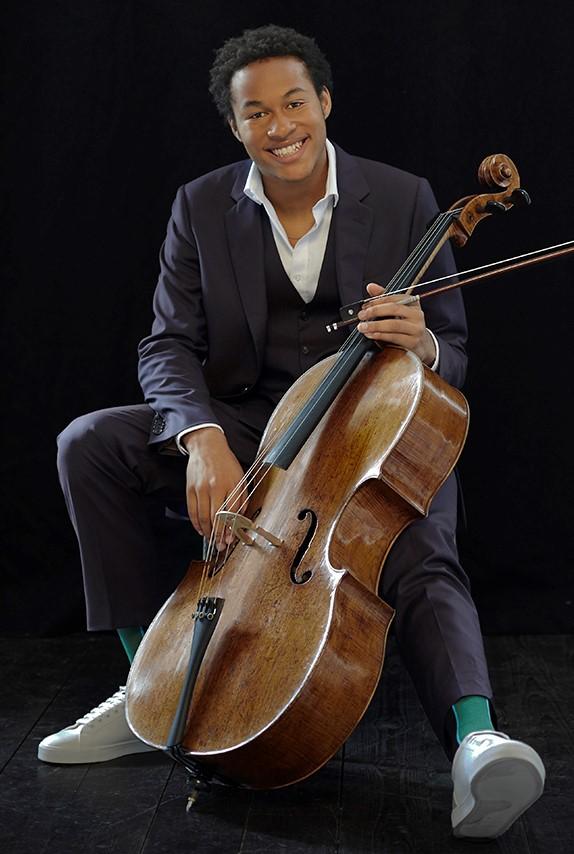
Mirga Gražinytė-Tyla was on a career roll. Having risen through the Los Angeles Philharmonic ranks from Dudamel Fellow to assistant and finally associate conductor, she became music director of the City of Birmingham Symphony Orchestra, which had become a launching pad for major careers, in 2016. She thrived there, made valuable recordings of British music and little-known Mieczysław Weinberg symphonies for Deutsche Grammophon, and gathered plenty of acclaim.
Then, life happened. Gražinytė-Tyla had three children in quick succession. She contracted COVID early in 2020. Like many musicians sidelined by the pandemic, she thought deeply about balancing career and home life. And with that, she stunned the orchestral world by resigning as music director of the CBSO, effective at the end of the 2021–2022 season, while agreeing to become the orchestra’s principal guest conductor this season, free of administrative responsibilities. It was a brave thing to do, getting off the fast-track career escalator that so few get a shot at.

So it was as principal guest conductor that Gražinytė-Tyla arrived back at her old stomping grounds, Walt Disney Concert Hall, on Wednesday night (Oct. 12) with the CBSO in the middle of the group’s first U.S. tour in 24 years. (The ensemble stops at San Francisco’s Davies Symphony Hall on Sunday, Oct. 16.)
Though Gražinytė-Tyla was popular in Los Angeles during her five years with the orchestra, she seems to have dropped off some folks’ radar, for the hall looked only about three-fifths full — even with a celebrity cellist, Sheku Kanneh-Mason (he of the Prince Harry/Meghan Markle wedding), sharing the bill. Wispy thin, she was also somewhat less animated most of the night than what I remember from her conducting dates here, though she still maintained a graceful technique, meticulously molding each phrase and conveying a blithe lightness of touch.
Topmost on the Los Angeles agenda was the U.S. premiere of a four-movement symphony that Thomas Adès fashioned from passages and fragments from his most recent opera, The Exterminating Angel. The first movement, “Entrances,” begins with lurching phrases that sound a bit discombobulated, yet it soon smooths out before descending slowly and carefully down into the bass. Then comes “March,” really a militant super march with a chugging snare drum drilling away so loudly that one of the trumpeters in the orchestra had to put his fingers in his ears. “Berceuse” is very pretty night music that becomes more troubled in its center, and in “Waltzes,” Adès seems to offer a contemporary macabre view not far removed in spirit from what Maurice Ravel did in La valse. The slithering strings and the melodic line for harp and piano near the end were the best parts. This work will likely have a long shelf life.
In the other cities on the tour, Kanneh-Mason is performing Edward Elgar’s Cello Concerto, but only in Los Angeles did he trot out the Haydn Cello Concerto in C Major. Given the Concerto in C’s ubiquity, now overshadowing its sister piece, the Concerto in D, it’s easy to forget that the work has only been in our musical life since 1962, a year after the parts were discovered in the Czech National Library in Prague after being given up for lost for two centuries.

Something, though, was not quite right in this collaboration. Both soloist and conductor seemed overly eager to pull the dynamics around in the first movement, with some swelling attacks stemming from the period-performance school and a wayward cadenza. The slow movement sounded more natural in phrasing, and the finale went to the races; one could hardly make out what Kanneh-Mason was doing in the quickest passages, and the CBSO strings were stretched to their limits. The young cellist provided a soulful improvisation as a solo encore — a brief lament on a drone.
Whether or not it was planned that way, we had the good fortune to hear Ralph Vaughan Willliams’s wonderful Fantasia on a Theme by Thomas Tallis for three string groups on the composer’s 150th birthday — a milestone that was a big deal in England and hardly noticed at all in this country. Gražinytė-Tyla recorded the Fantasia beautifully as part of her British Project album, and so went the concert rendition, in which the CBSO strings came alive with modal lushness, with an internal string quartet playing its unaccompanied passages sweetly. In an unusual move for the third ensemble, Gražinytė-Tyla positioned the nine string players behind closed doors somewhere backstage, creating a persuasively ghostly echo effect. Vaughan Willliams — whose nine symphonies still haven’t attracted the frequency of performance in the U.S. that they deserve (though recordings abound) — was well served on his birthday.
Placing Claude Debussy’s La mer last on a touring program is a good way to show off the orchestra as a parting shot — and Gražinytė-Tyla and company were up to the task, providing plenty of transparent color, languor, and fury at conventional tempos. She also included another touch of Adès as an encore — the lovely, calm, elegiac, thoroughly tonal “O Albion” for strings. Gražinytė-Tyla has been known to bring her babies to rehearsals as a way to “help the future and mankind,” to inoculate the next generation with the wonders of classical music. This little berceuse would be perfect for that.




